7 Dumbbell Lat Exercises: V-Taper at Home!
1. Dumbbell Single-Arm Rows
Perhaps one of the most common dumbbell lat exercises is the dumbbell single-arm row, a variation of the standard bent-over row wherein the exerciser supports their torso with one arm on a bench while the other arm performs a rowing motion.
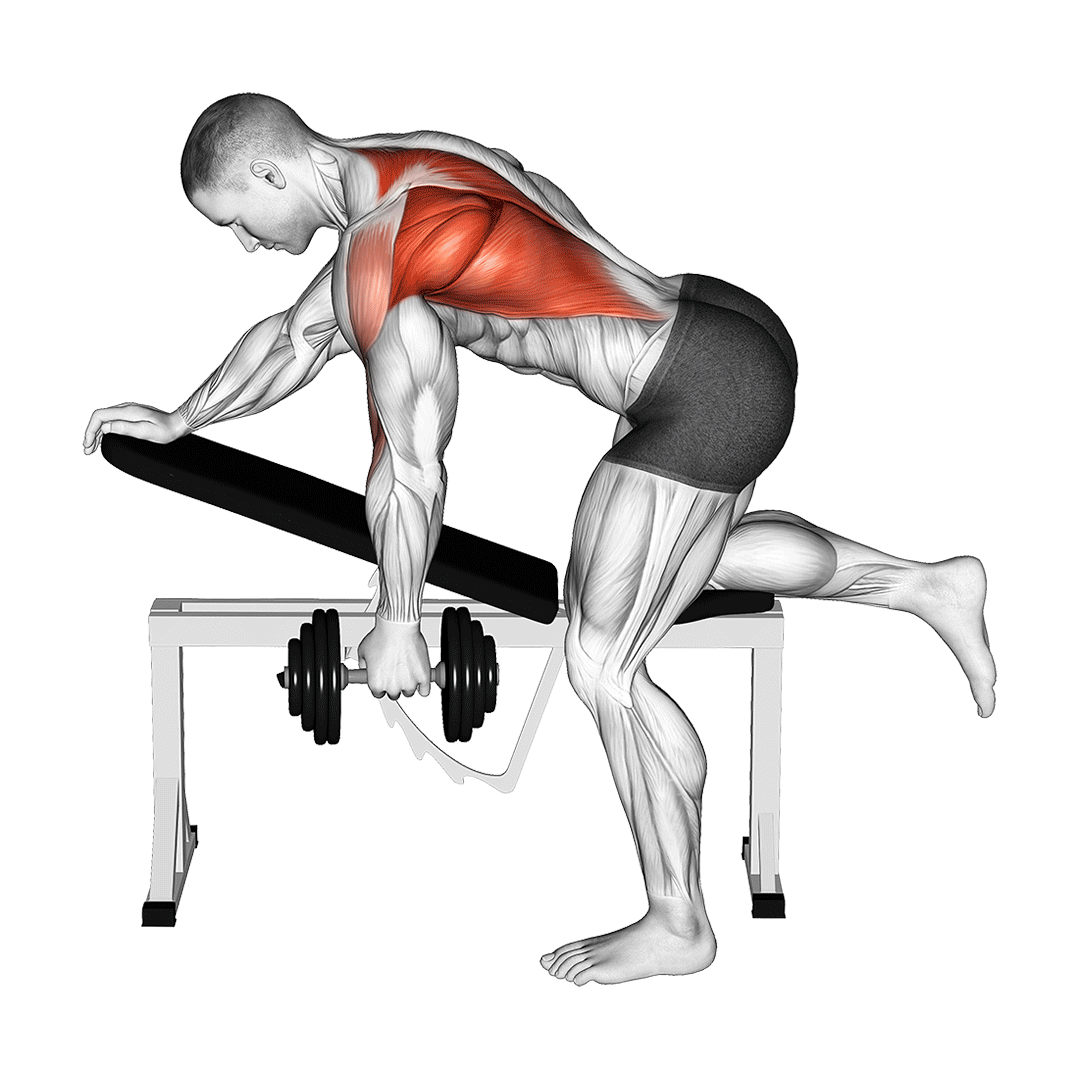
The dumbbell single-arm row’s primary benefit is in its far greater level of training specificity in comparison to other row exercises, excelling in reinforcement of the mind-muscle connection alongside unilateral muscular recruitment.
This exercise is otherwise only possible with a dumbbell or kettlebell, making it unique among lat exercises.
2. Dumbbell Incline Rows
A variation of the chest-supported dumbbell row, dumbbell incline rows place the exerciser’s torso at an angle so as to maximize latissimus dorsi and biceps brachii activation while simultaneously reducing the risk of injury in certain respects.

Furthermore, the dumbbell incline row is particularly adept at preventing any break in form, either intentional or not. This makes it excellent for novices or for other kinds of lifters that find themselves having difficulty adhering to proper rowing form.
All of these factors combine to make the dumbbell incline row one of the best and safest choices for a dumbbell-based latissimus dorsi workout.
3. Dumbbell Renegade Rows
A classic among athletic conditioning workouts, the dumbbell renegade row involves the exerciser assuming a standard plank stance with a pair of dumbbells beneath their hands, rowing each dumbbell in an alternating fashion until the set is complete.
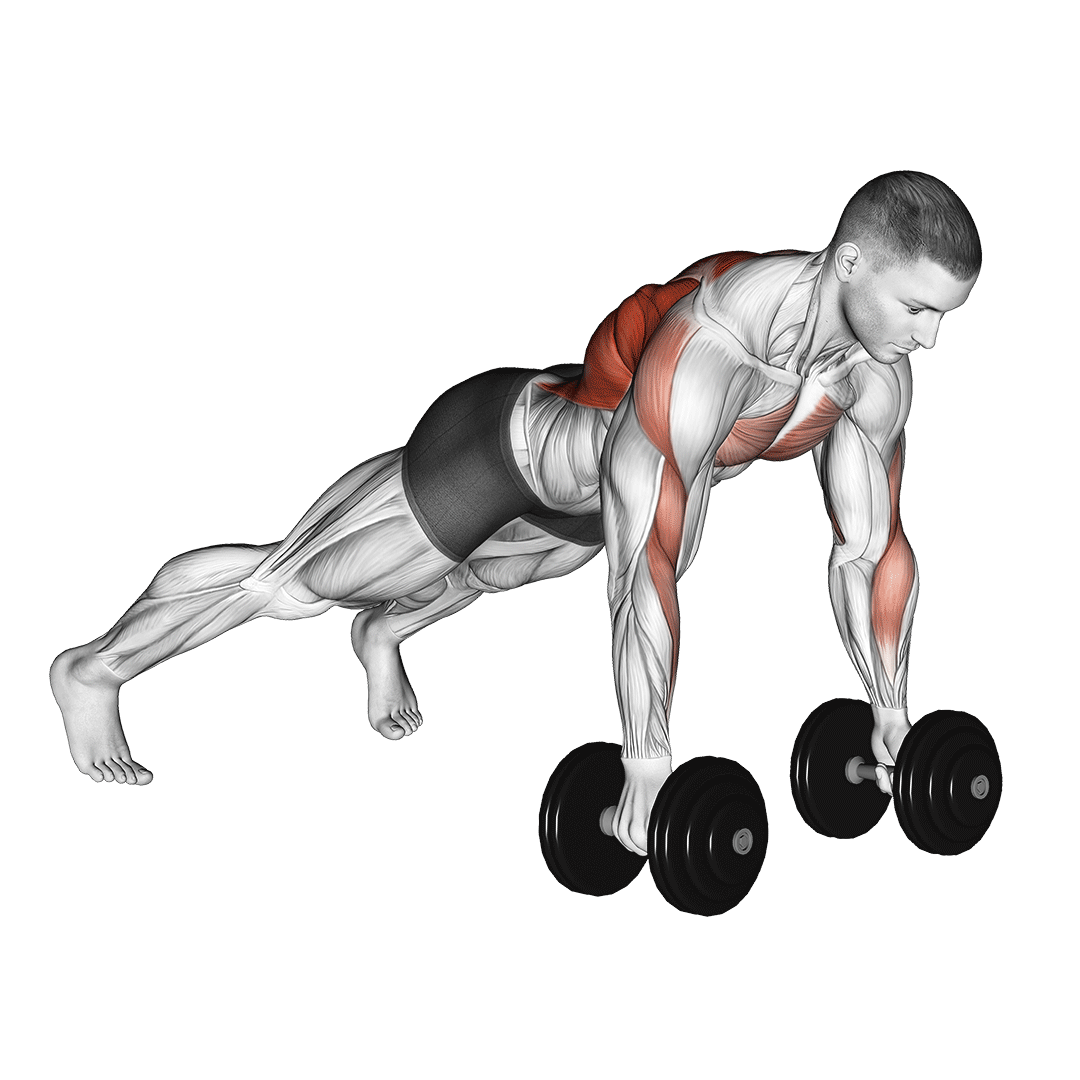
Not only is this particular exercise among the best for developing the back and biceps, but it also trains the core musculature to a level that is not otherwise possible with any other kind of rowing exercise - making it uniquely suited for athletic training and similar endeavors.
The drawback to this benefit, however, is the reduced amount of weight used - making the exercise ineffective for conditioning powerlifters or similar individuals that wish to increase their maximal row strength.
Other Compound Dumbbell Lat Exercises
4. Dumbbell Lat Pullovers
An unconventional lat exercise that is often confused with pullovers for the pectoral muscles, dumbbell lat pullovers add a level of variety of a back workout that is not otherwise possible with any other kind of equipment.
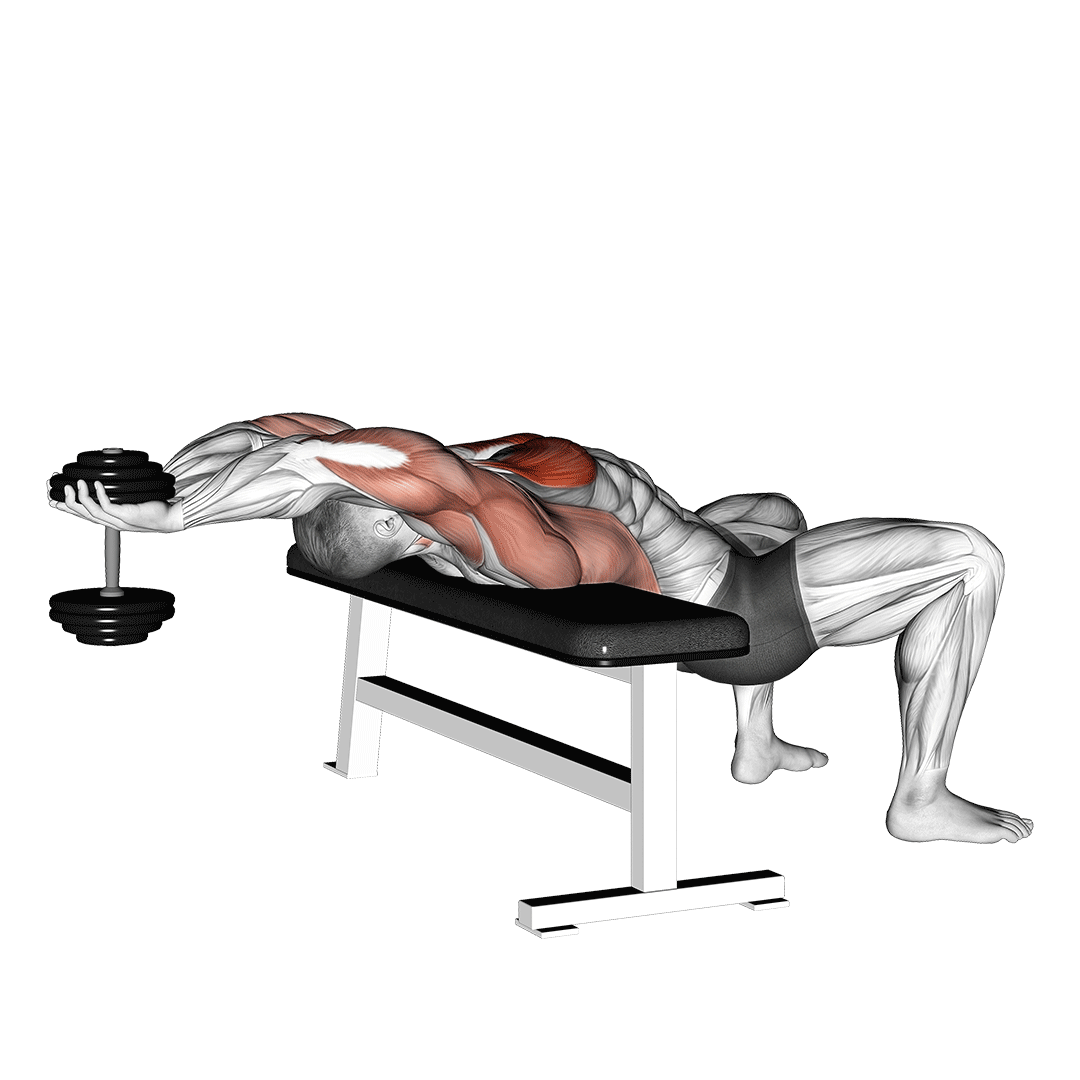
Dumbbell lat pullovers involve the exerciser lying flat on a bench and lowering a dumbbell behind their head with both hands, activating the latissimus dorsi muscle without involving other muscle groups along the middle or lower portions of the back.
Unfortunately, due to the complexity of the movement, some level of shoulder mobility and bodily awareness is needed in order to execute this exercise properly - thereby placing it squarely in the range of intermediate to advanced level exercise.
5. Weighted Pull-Ups with a Dumbbell
Though everyone is familiar with the standard pull-up, not many are aware of its capacity to be weighted through the use of a dumbbell.
This is done with the exerciser simply gripping a dumbbell between their feet or legs as they perform the pull-up, increasing the resistance of the exercise and allowing it to act as a progression from standard bodyweight pull-ups.
Considering the fact that pull-ups are the quintessential latissimus dorsi exercise, any proper back workout would be lacking without its presence among the order of exercises - especially of the weighted variety for more advanced lifters.
Isolation Dumbbell Lat Exercises
6. Dumbbell Reverse Fly
Though most often performed as a method of developing the posterior deltoid head, increasing the tilt of the torso until it is almost parallel with the floor can effectively change the target of the exercise to the latissimus dorsi - making it a lesser known isolation exercise for the muscle group.
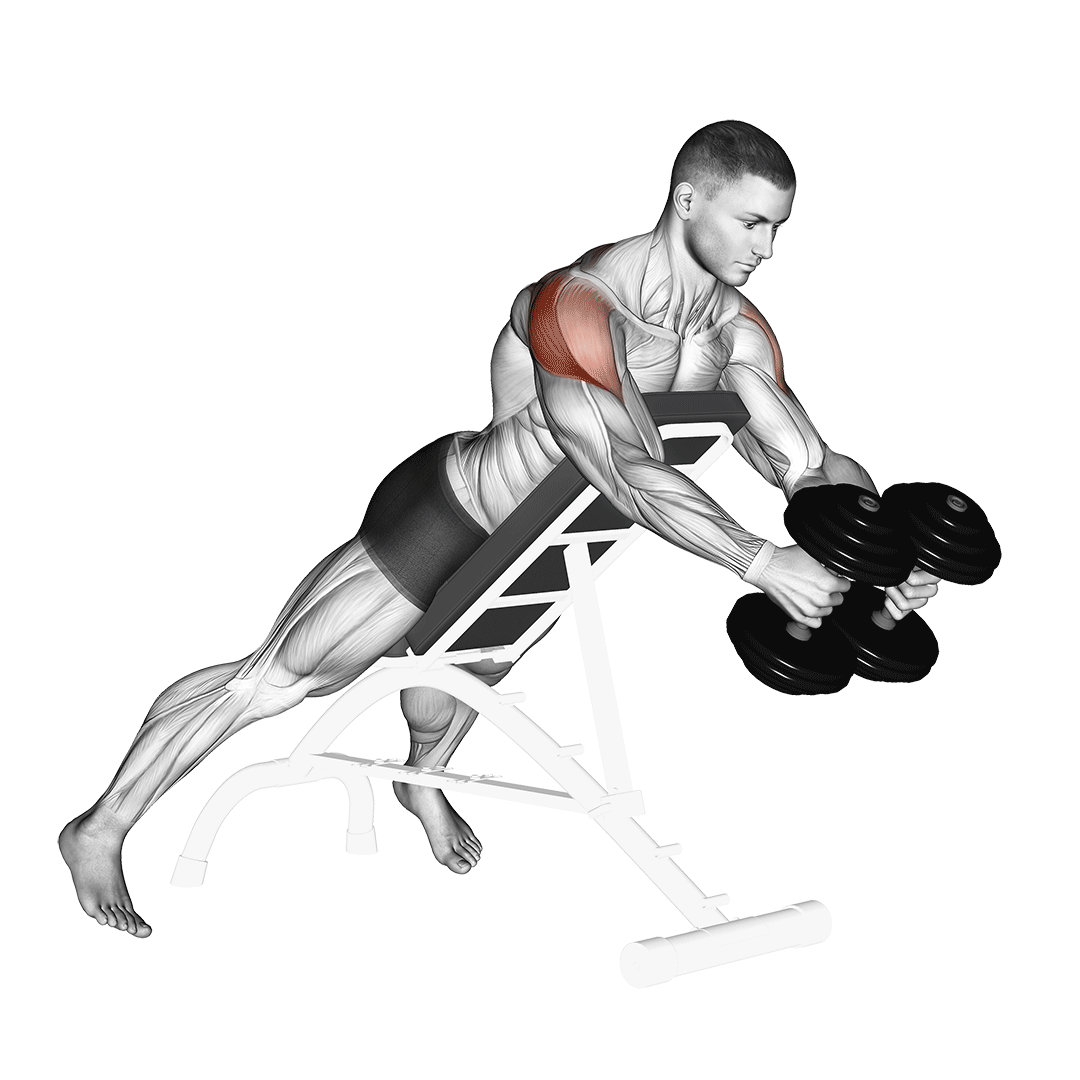
The dumbbell reverse fly is an excellent way of placing significant training volume on the lats without the usage of excessive weight, allowing recovering lifters or those without the confidence to lift heavy weights the benefit of highly targeted latissimus dorsi training.
7. Dumbbell Superman Pulls
A lesser known exercise more frequently seen in physical rehabilitation, dumbbell superman pulls allow for a far lower impact to be retained while still placing dynamic training stimulus on the latissimus dorsi.
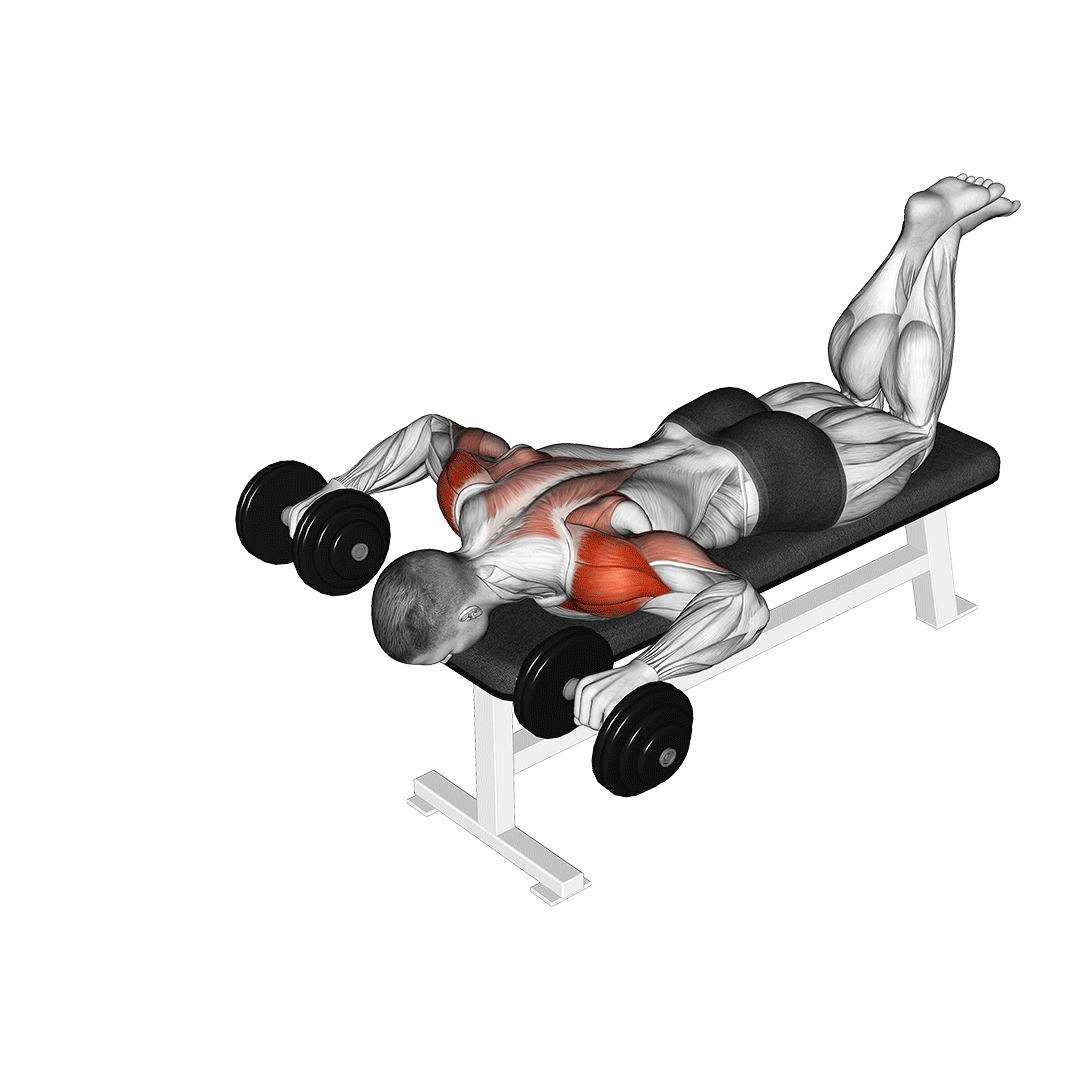
This, alongside the isolating nature of dumbbell superman pulls, creates an exercise uniquely suited for warm-up routines, those recovering from injuries or lifters wishing to finish off an intense workout with an exercise that does not strain the body to an excessive degree.
Benefits of Dumbbell Lat Exercises
Independent Muscular Contraction
A major issue with bilateral exercises (such as those with barbells) is that one side of the body will usually overpower the other, resulting in muscular imbalances, poor exercise mechanics and a host of other problems that can hamper the development of the lifter.
This is not present in dumbbell exercises, even those that are of a compound variety. As each side of the body works independently of the other during dumbbell-based movements, these issues do not occur.
Furthermore, some lifters may even choose to only train one side of the body at a time, even if they have the capacity to perform the exercise with both sides simultaneously.
This ensures an optimal mind-body connection, and otherwise eliminates any issues that may be present relating to bilateral muscular recruitment.
Muscular Imbalance Rehabilitation
Another reason why many exercisers will intentionally seek out dumbbell-based exercises has to do with their capacity to rehabilitate muscular imbalances, with the aforementioned one-sided muscular recruitment of dumbbell exercises being the main reason for this benefit.
Furthermore, the usage of dumbbell-based exercises will force both sides of the body to undergo the same level of resistance and volume, forcing the weaker muscle to “catch up” to its stronger counterpart through more intense training stimulus.
Greater Mind-Muscle Connection
The usage of dumbbell-based exercises can allow the lifter to perform slower and more focused repetitions, increasing latissimus dorsi activation and reinforcing neurologically-driven strength developments.
In particular, conscious activation of the lats is an issue many novice exercisers have, and dumbbell lats exercises is one of the few ways to “teach” the nervous system how to flex such muscles on command.
Greater Safety
Barbell exercises are generally considered to be less safe than dumbbell exercises, both due to the fact that the implement being lifted is larger in size, as well as the fact that barbell exercises are more difficult to simply disengage in comparison.
Though both barbell and dumbbell lats exercises are generally safe and easy to perform, individuals with a history of lower back or hip problems may find that barbell rows are significantly more aggravating to their injuries than the arm or chest-supported dumbbell rows instead.
References
1. Lehman GJ, Buchan DD, Lundy A, Myers N, Nalborczyk A. Variations in muscle activation levels during traditional latissimus dorsi weight training exercises: An experimental study. Dyn Med. 2004 Jun 30;3(1):4. doi: 10.1186/1476-5918-3-4. PMID: 15228624; PMCID: PMC449729.
2. Marchetti PH, Uchida MC. Effects of the pullover exercise on the pectoralis major and latissimus dorsi muscles as evaluated by EMG. J Appl Biomech. 2011 Nov;27(4):380-4. doi: 10.1123/jab.27.4.380. Epub 2011 Oct 4. PMID: 21975179.
